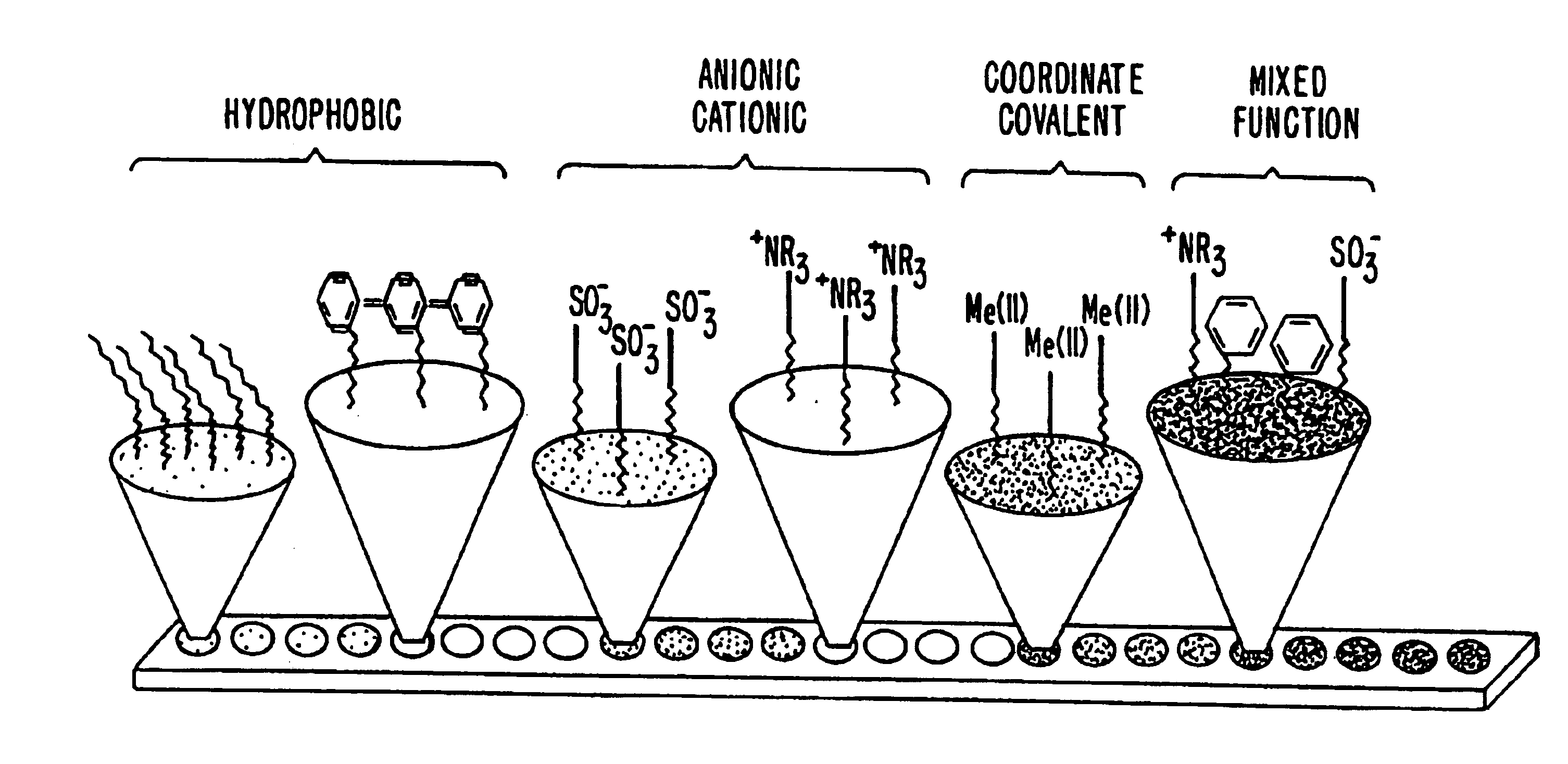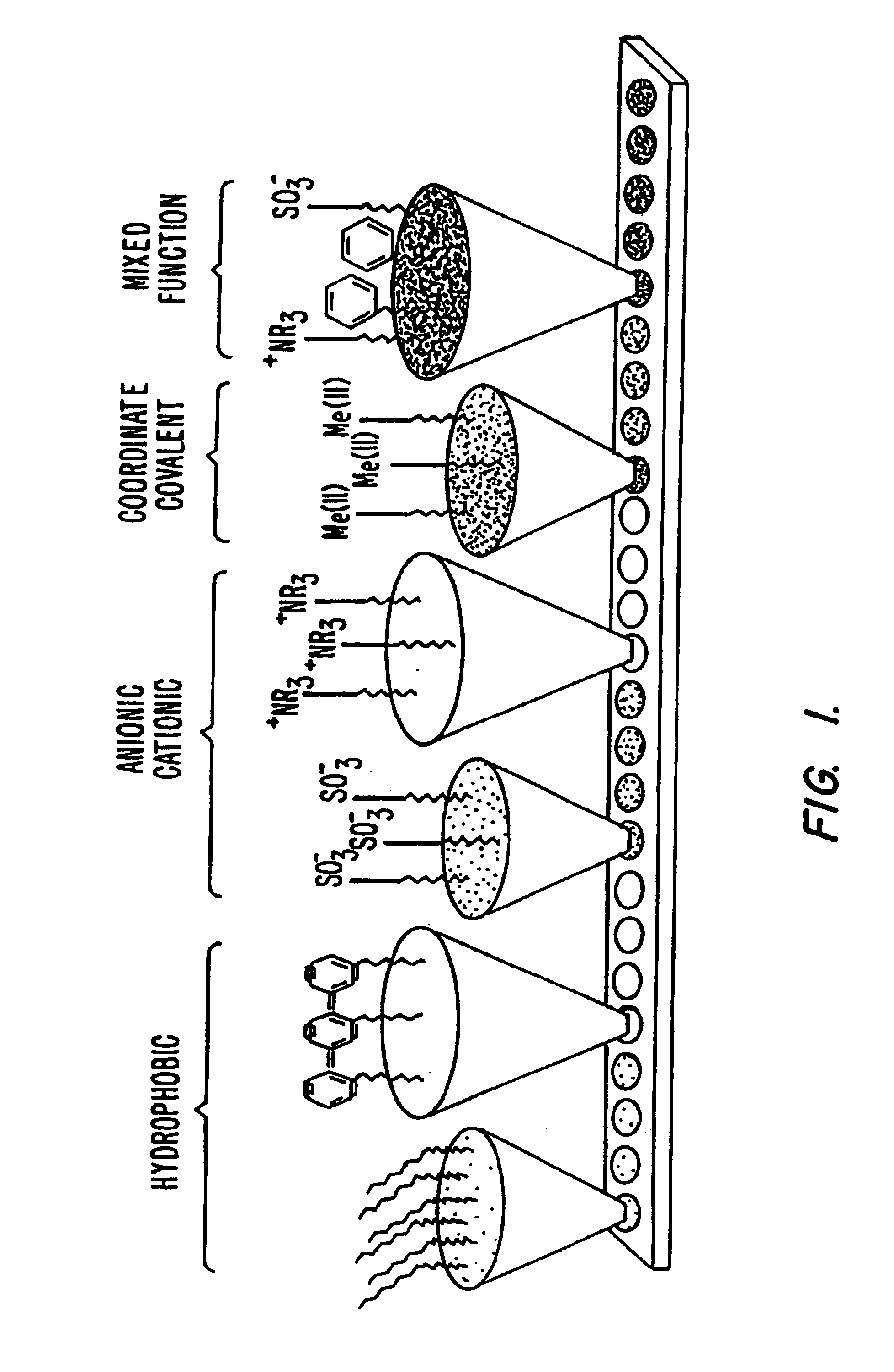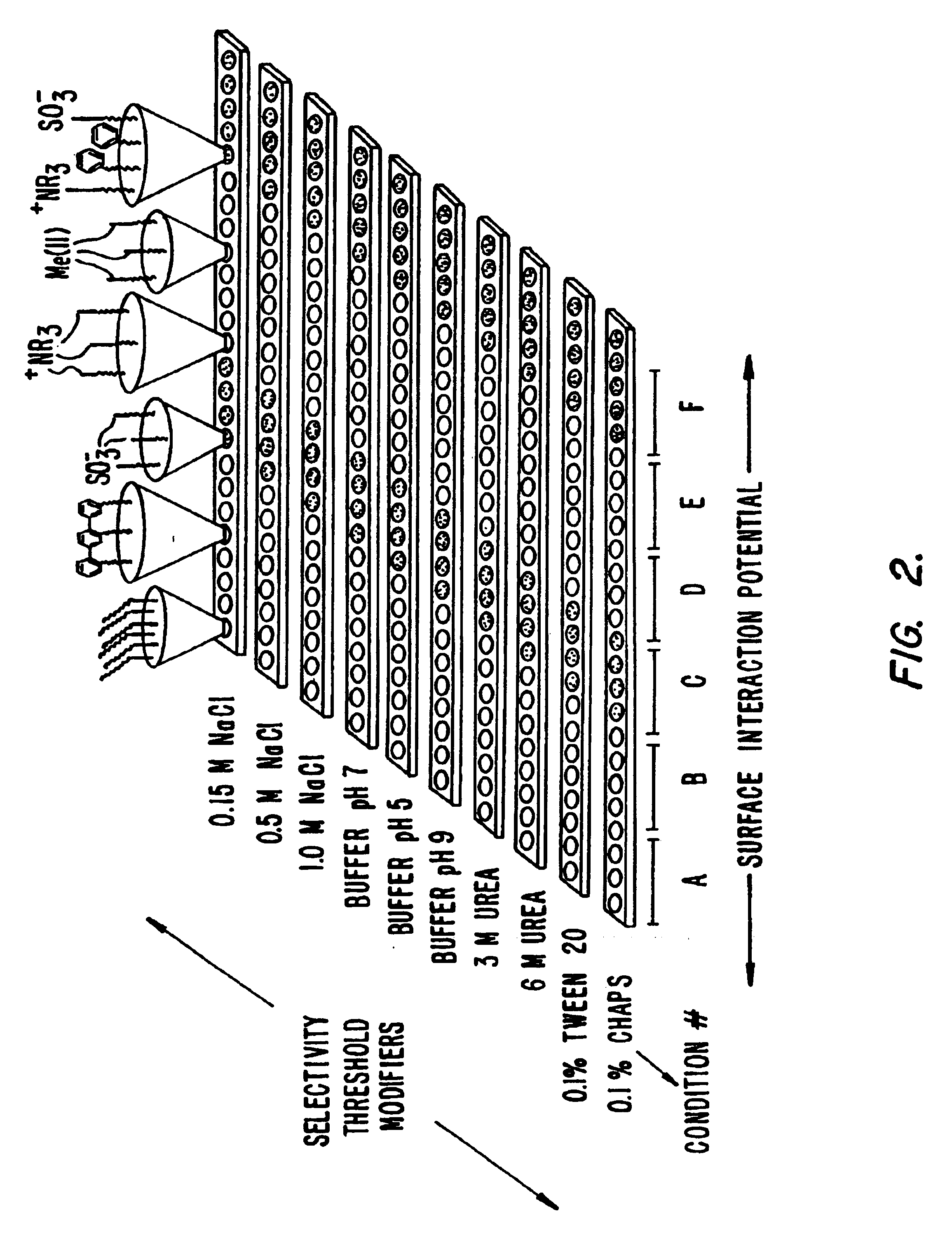Retentate chromatography and protein chip arrays with applications in biology and medicine
a technology of retentate chromatography and protein chip array, applied in the field of separation science and analytical biochemistry, can solve the problem of no routine or convenient means for detecting analyte, and achieve the effect of high information resolution, easy testing, and rapid testing of adsorption
- Summary
- Abstract
- Description
- Claims
- Application Information
AI Technical Summary
Benefits of technology
Problems solved by technology
Method used
Image
Examples
examples
[0368]The following examples are offered by way of illustration, not by way of limitation.
[0369]In the following examples, the following products and terms are employed. Chicken egg white lysozyme (1 μl diluted to 10 picomole / μl water), is available from Sigma Chemical Company, St. Louis, Mo. “Human serum” refers to a composition of 1 μl of human serum diluted 1 to 5 in 20 mM sodium phosphate buffer, 0.5 M NaCl, pH 7.0.
[0370]As used herein, “mg” means milligram(s); “ml” means milliliter(s); “μl” means microliter(s); “cm” means centimeter(s); “nm” means nanometer(s); “M” means molar; “mM” means millimolar; “min” means minute(s); “%” or “percent” is percent by weight unless otherwise specified; “NaCl” means sodium chloride; “TFA” means trifluoroacetic acid.
I. Protocols for Retentate Chromatography
[0371]The following protocols are examples of procedures for performing retentate chromatography.
[0372]A. Protocol for Retentate Mapping (Using Chromatographic Series Array)
[0373]1. Sample Tr...
PUM
| Property | Measurement | Unit |
|---|---|---|
| volume | aaaaa | aaaaa |
| molecular mass | aaaaa | aaaaa |
| pH | aaaaa | aaaaa |
Abstract
Description
Claims
Application Information
 Login to View More
Login to View More - R&D
- Intellectual Property
- Life Sciences
- Materials
- Tech Scout
- Unparalleled Data Quality
- Higher Quality Content
- 60% Fewer Hallucinations
Browse by: Latest US Patents, China's latest patents, Technical Efficacy Thesaurus, Application Domain, Technology Topic, Popular Technical Reports.
© 2025 PatSnap. All rights reserved.Legal|Privacy policy|Modern Slavery Act Transparency Statement|Sitemap|About US| Contact US: help@patsnap.com



